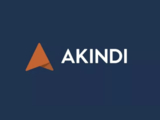UMBC Migrates from Scantron to Akindi
New Platform Easier to Use and Supports Campus-Wide Analysis
Last year, DoIT announced the pilot of a tool called Akindi, which serves as a Scantron alternative and allows instructors to print and score bubble sheets from any local printer/scanner. There has been nearly full campus-wide adoption since this time (while faculty also continue to use Blackboard for online exams). In Fall 2019, the TSC graded 354 Scantron tests. In just two years, that number was down to 16 tests scored in Fall 2021, and we've only graded 4 tests during the current term. At the same time, we've seen 52 faculty members deploy Akindi in their courses across 242 assessments, and scanning nearly 21,000 bubble sheets. On April 1, Jordan Wilson scanned Akindi's 9 millionth bubble sheet from Exam 1 in their CHEM 102L Introductory Chemistry Lab course.
"Scanning the bubble sheets in the department [is] easy and very convenient. Akindi always gives very detailed statistics related to student performance."
~ Math & Stats Faculty Member
Given the available data, in general, the test design did not appear to predict DFW rates. However, controlling for test features, there is an impact of course design on DFW rates, which has a much more consequential relationship with DFW rates than does the internal consistency of the assessments, or other test attributes. The level of student engagement in a course, as measured by proxy using Bb course interactions, also reduces the potential for negative outcomes.
Future analyses would benefit from more diverse testing pools including additional courses, departments, and colleges. It may also be possible to join Akindi and Bb assessment data to get a more comprehensive view of the relationship between course outcomes and various indicators of assessment design.
Posted: May 6, 2022, 3:28 PM
